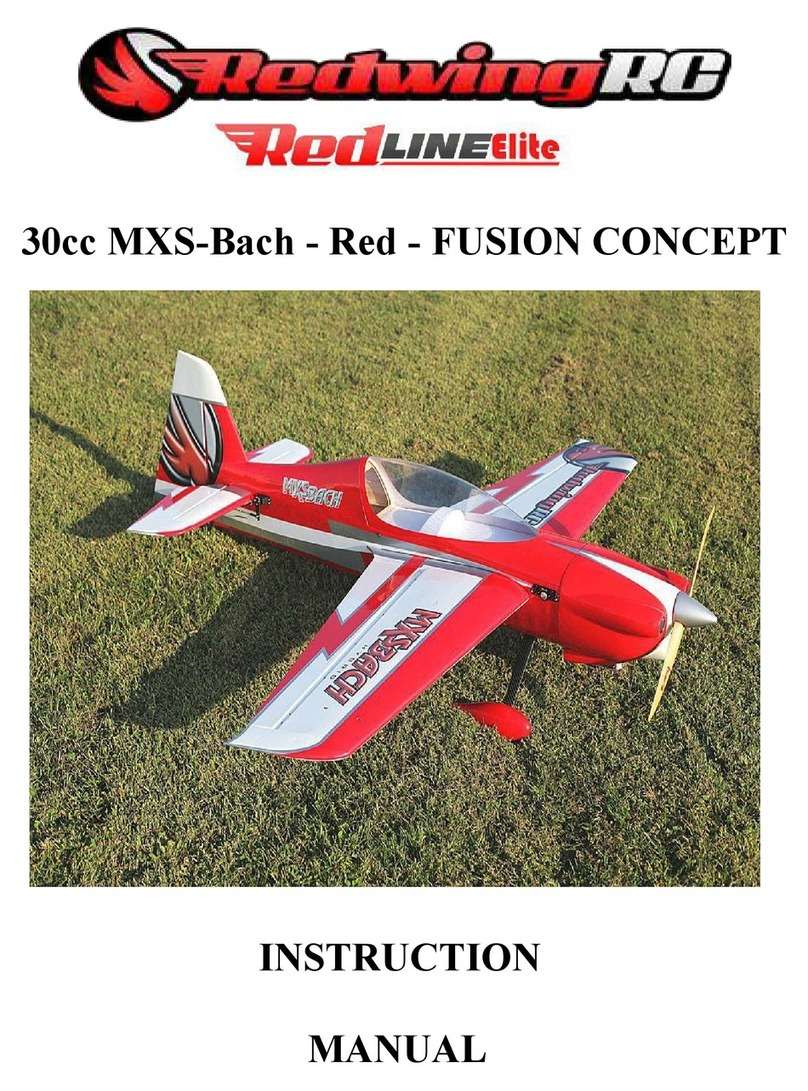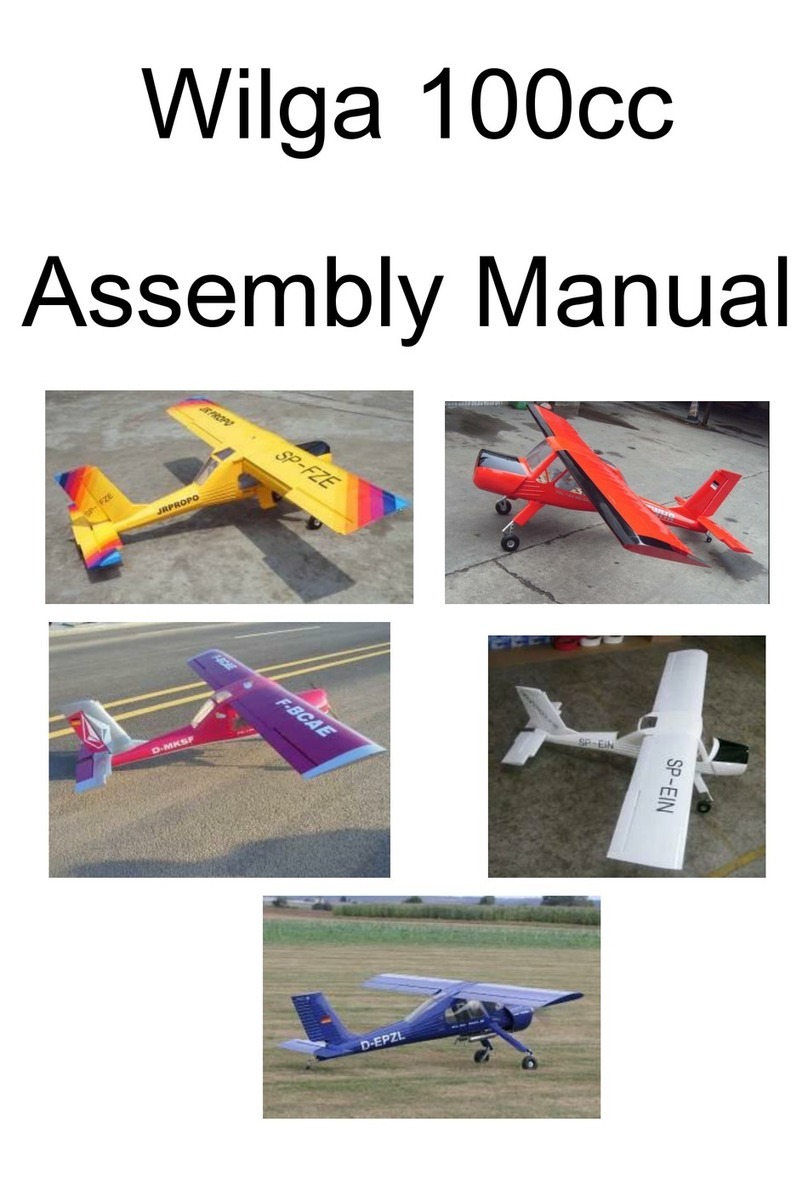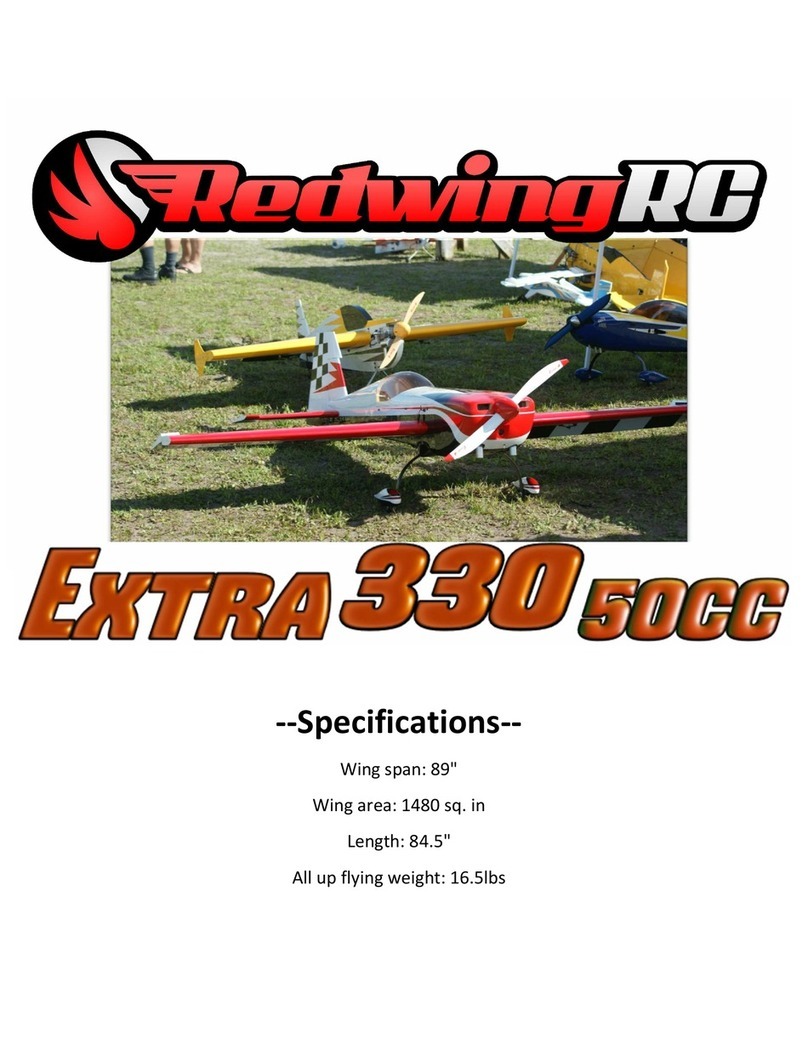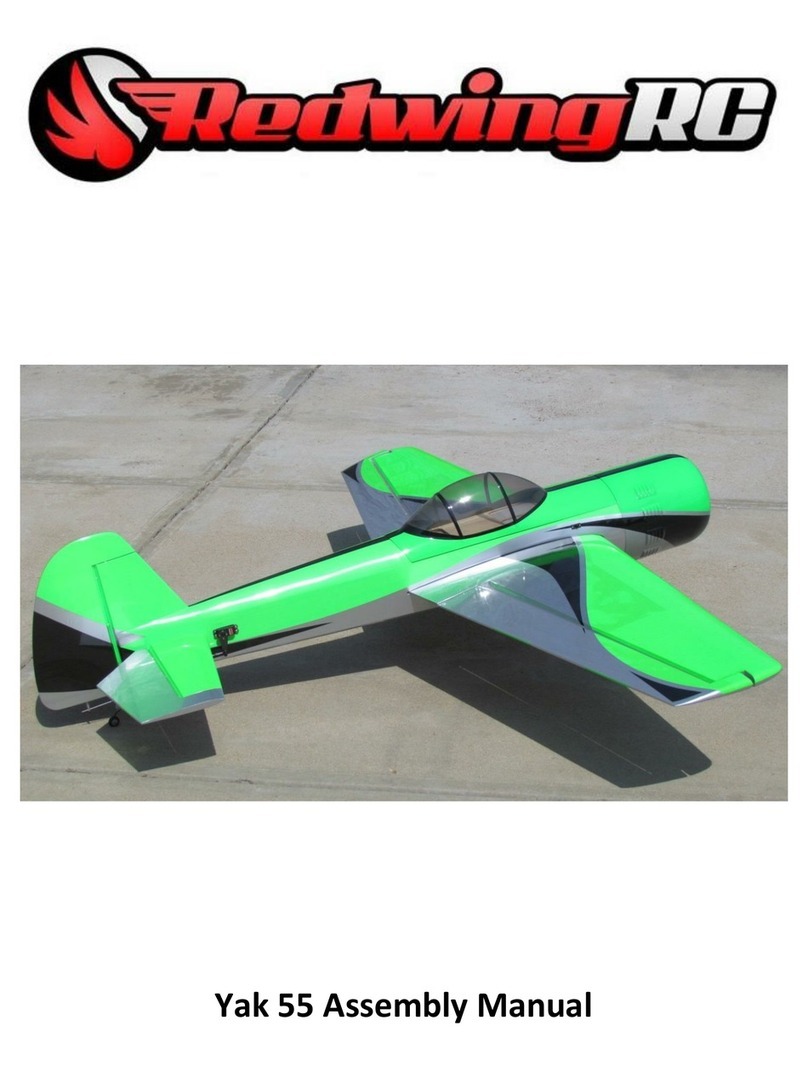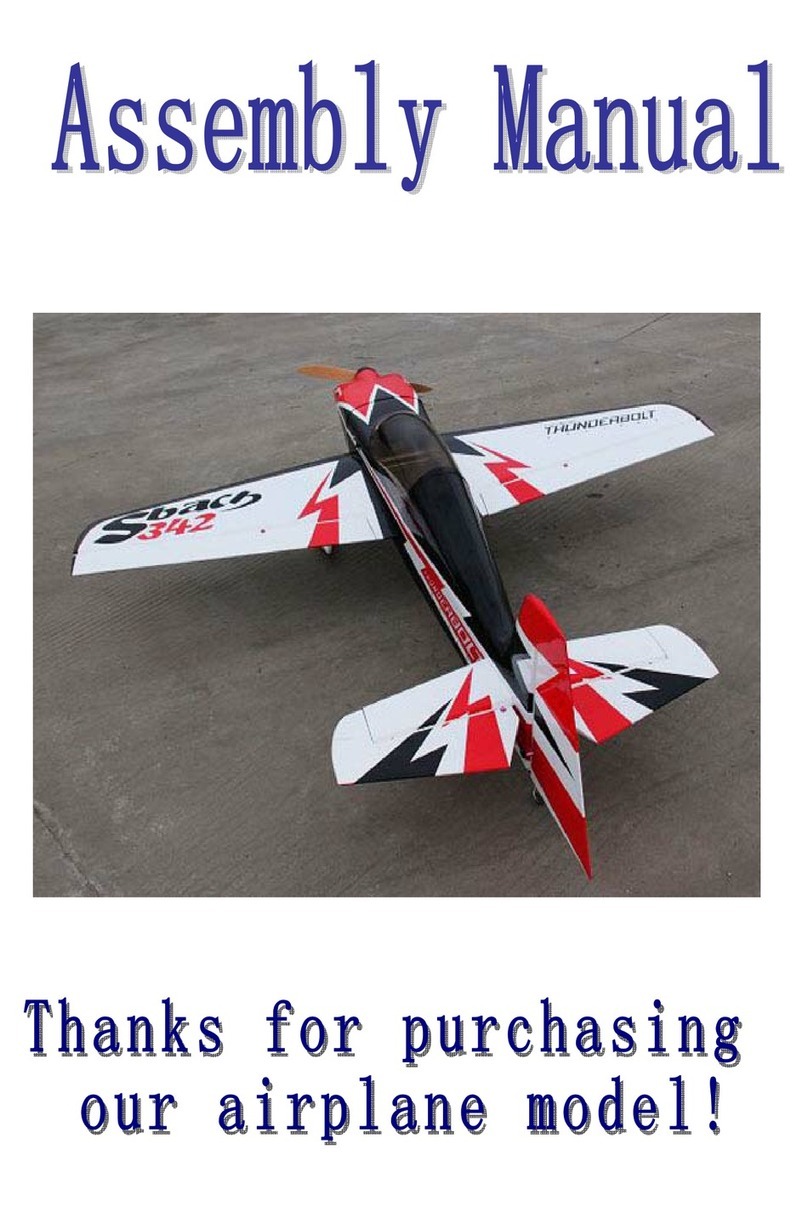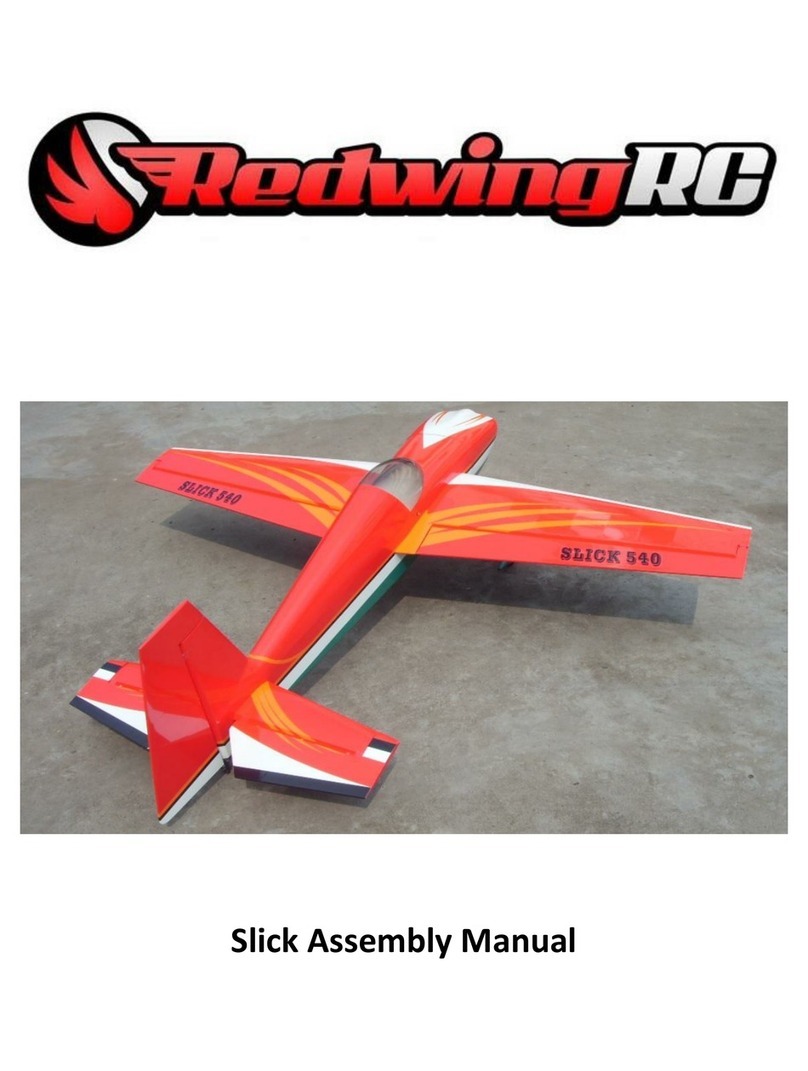
STRONG DESIGNS RW EDGE 540V3 30CC
8
•Using a toothpick, apply epoxy into each hinge
point bore. Then coat one end of the point
hinge with epoxy to install.
NOTE: Make sure to align the hinges by flexing
them to the side 90 degrees and fully inserting.
You should have some epoxy squeeze-out as
the pin is inserted. Be careful to pull the excess
epoxy away from the hinge point and not work
it into the pivot.
NOTE: Excess Epoxy is easily removed with
denatured alcohol before it cures.
From the Pro: To make things easy, use a Q-tip to
clear epoxy from around each hinge point as it is
installed.
•Install all the hinge points and set aside to
cure.
From the Pro: While the epoxy is curing, it is a great
time to skip ahead and start installing the control
horns.
•Once cured, mix another batch of epoxy and
coat the inside of each hinge point bore as
before. Then stand out the hinge points, and
coat the end of each.
•Carefully align the hinge pins to the bores as
you install to the fuselage and remove any
excess epoxy
with denatured
alcohol.
•Ensure the rudder moves freely bevel to bevel
to allow maximum deflection and set aside to
cure.
From the Pro: Use a few pieces of painters tape to
secure across the hinge line as it cures to ensure a
tight hinge line.
•Prepare the rudder servo while the epoxy is
curing. Install the grommets and inserts and
secure the extension to the lead at this time
and set
aside.






